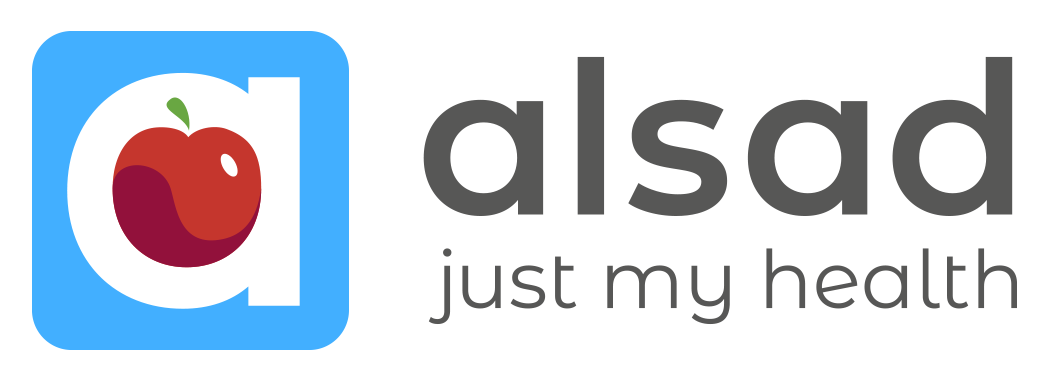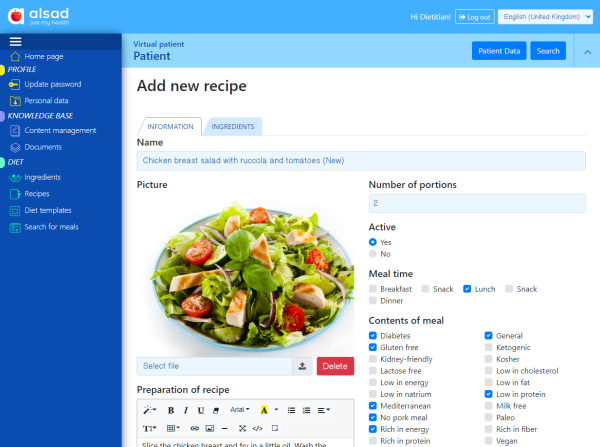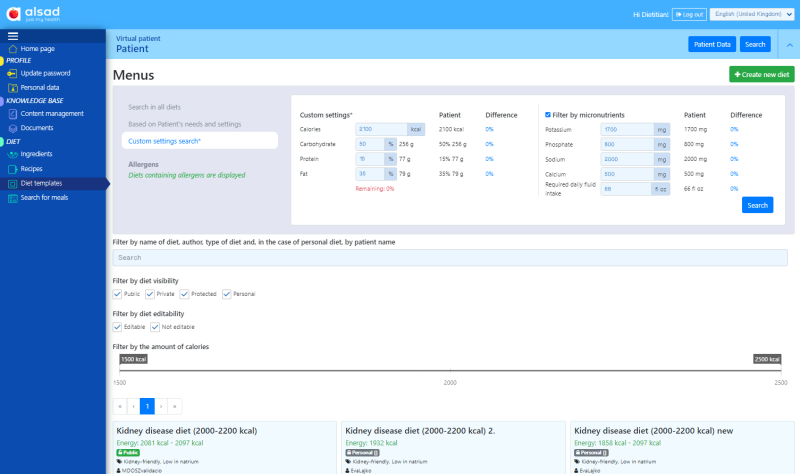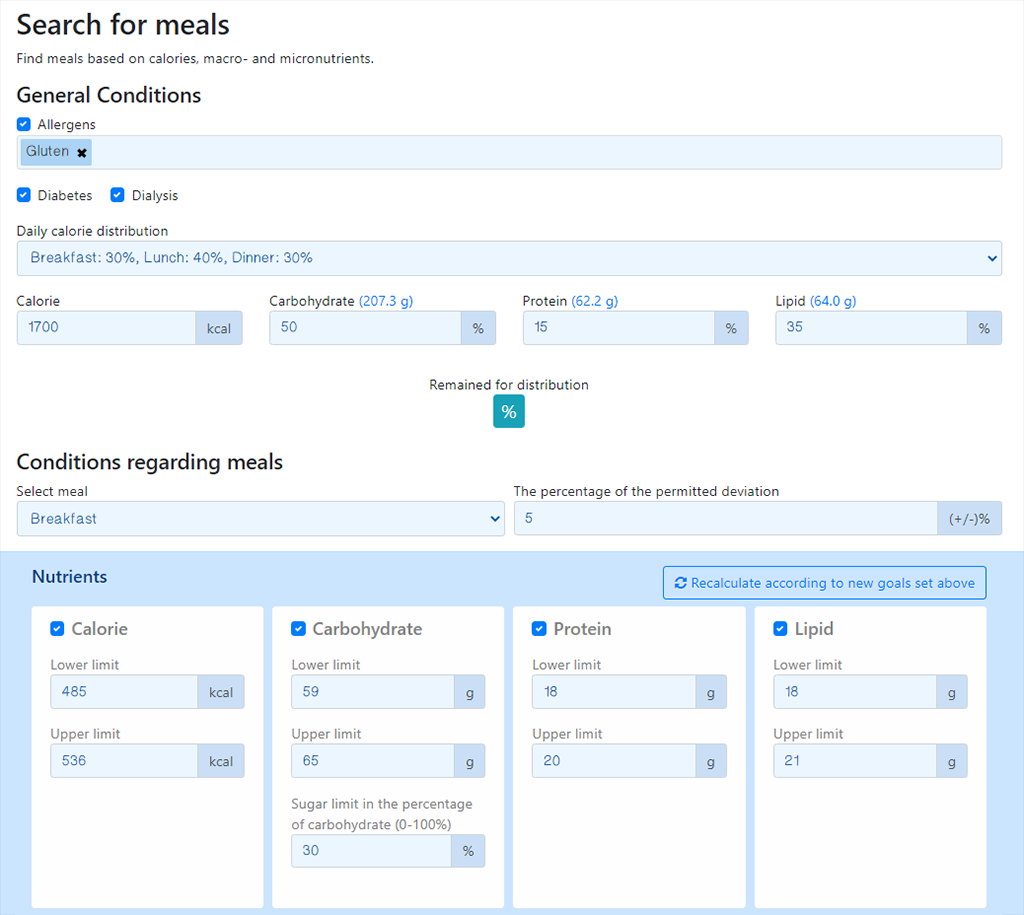Practice team of the health provider
ALSAD helps to decrease shortcomings in patient education, which can be especially critical in managing chronic cases, while the application can also extend knowledge of healthy users regarding health awareness and adequate lifestyle. ALSAD is a solution which can individualise the guidance for the patient, and is able to follow any changes of the user’s health condition and habits, using AI (Articifial Intelligence) algorithms.
One of key functionalities of ALSAD is the automated or manual meal plan generation, which is built on the medical data of the user. Another unique feature is the specific support module for dialysed kidney patients, both of these represent special market value.

Safety for the practice team
End users (patients) can share their measured and logged health and medical data and their daily meal logs with the doctors they select within the actual practice team, using a secure channel. The method applied is completely compatible with GDPR and Hungarian data protection regulation, as the patient can determine what to share with whom.
Content created within the practice management – including health-related professional articles or recipes and sample menu plans created by the team’s professional dietitians – is visible only by patients who select this particular practice as their health provider.

Content provider functions (Knowledge base)

Content service providers can easily create and structure new Knowledge Base elements, using the system’s content management functions and results of previous user searches. These content elements uploaded by professionals have various, assigned labels. These labels, compared with data in the individual patient profiles can support personalised content recommendation.
Content service provider functions (Diet)
Using the „Dietitian role” function, the user can compile recipes, using the ingredients’ database. User can also add elements to the database of ingredients. Recipes, ingredients and meal plans which are uploaded by professional dietitians can be viewed by all users. Users with patient status can use all dietitian functions, however, recipes or ingredients uploaded by them cannot be viewed by other members of the user community, which ensures that only validated information are published for general use. The user community can view only validated content of professional dietitians and doctors.
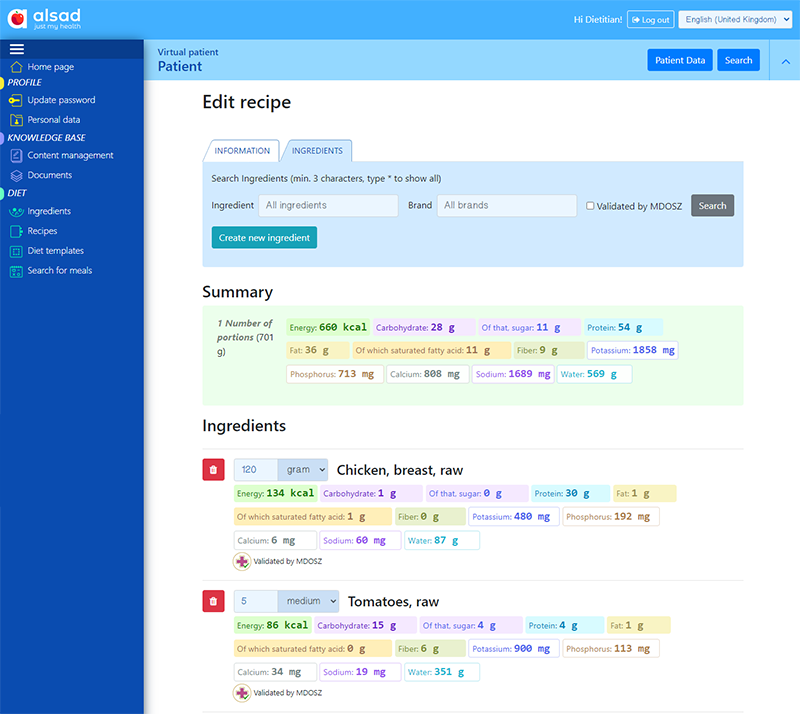
“Virtual Patient” function for Dietitians
Dietitians can use the searchable and structured database of meal ingredients to compile meal recipes. ALSAD shows exact nutrient and calorie content of each meal prepared, so it is easily visible if the given food meets the dietary requirements and goals, and how much is recommended to be consumed. Database of recipes created by dietitians is also searchable, both individual and family portions.
ALSAD uses the well-known USDA nutrient database, and experts are able extend this list using their professional knowledge. Allergen list was created with the contribution of our experts, and dietitians working with our team have created the diets, sample menu plans currently available, which are suitable for many health conditions and life situations. Besides using the available data and professional content, the specific algorithm of ALSAD can help to provide automated recommendations and filtering can support both dietitian and patient to configure the most suitable meal plans and dietary plans.
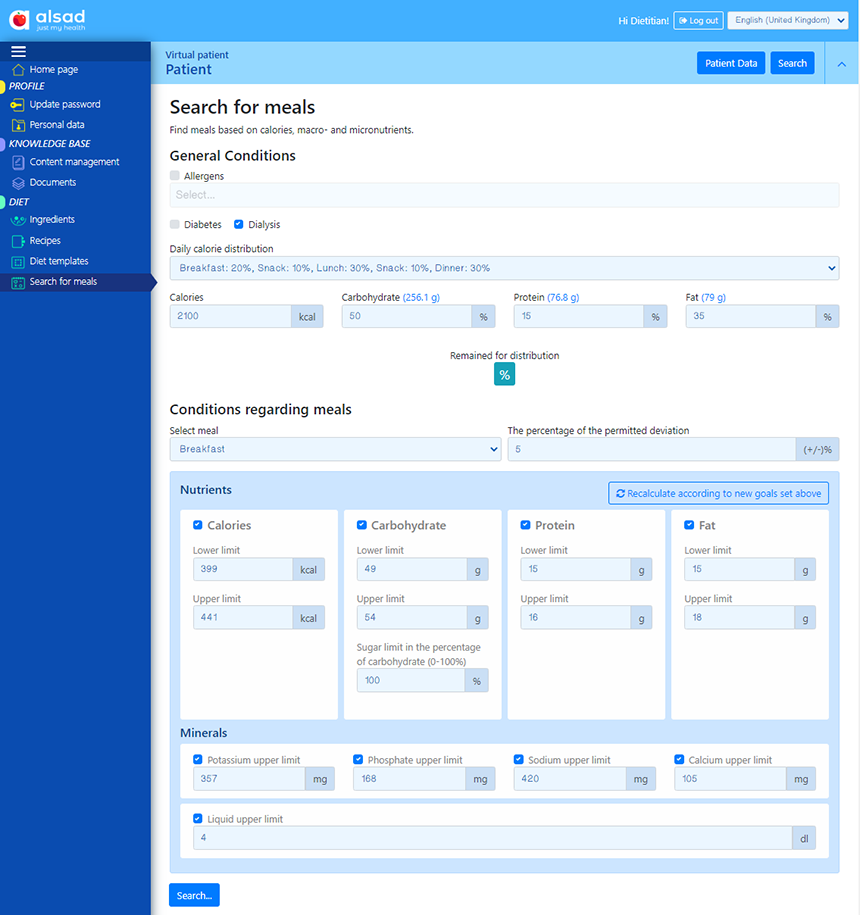
A personalised menu plan recommendation is created if all patient data and individual dietary goals are considered. Dietitians, however, do not have to create these completely from scratch, as previously created sample menu plans are accessible, and ALSAD pre-screens those which sound most suitable for the actual users – and some of these can be easily tailored to individual needs by using the “clone and modify” function.
Link between Doctor and Patient
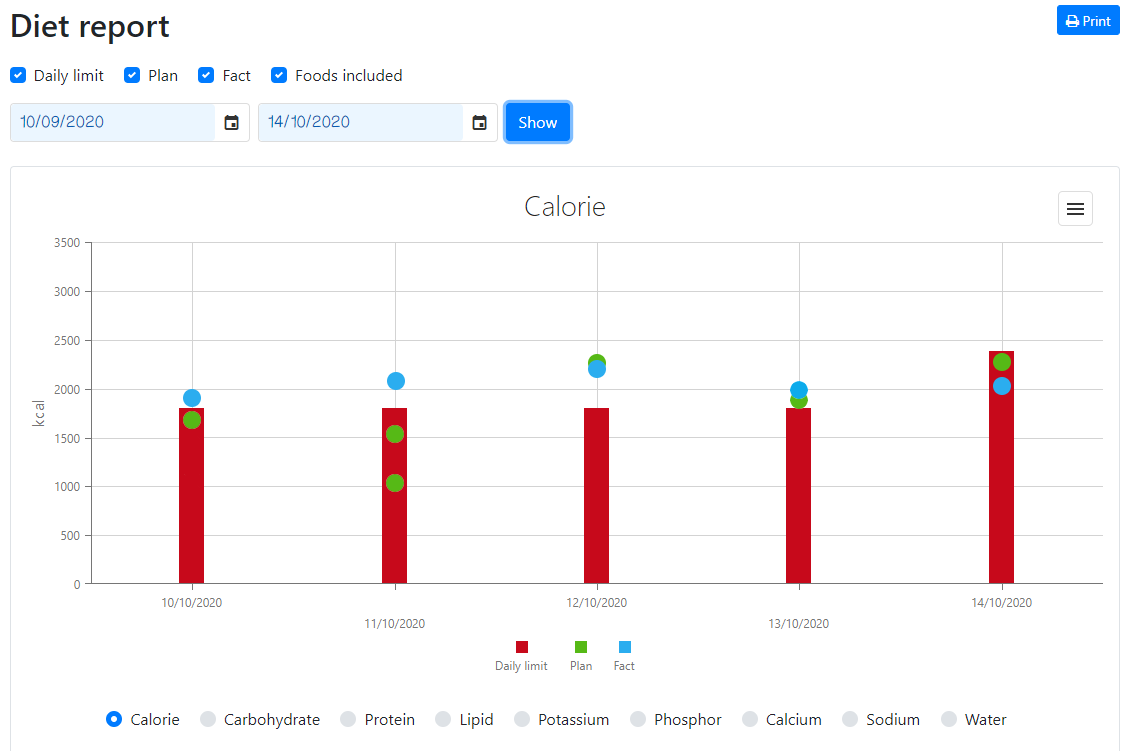
If the doctor or dietitian enters with his or her own profile, than from the “Patients” menu can see the list of patients (“List of my patients”). From this list, the professional can select the dataset of the actual patient – selecting the list item gives access to the patient’s profile, and from then the patient’s data is visible (instead of the dietitian’s or doctor’s own data).
The patient needs to give consent to the dietitian to view patient data. If the patient gives that consent, then the dietitian can directly set dietary goals for the user – no personal meeting is required to assess dietary needs. Personal patient data, of course, cannot be modified by the dietitian (except for some very special piece of information) – so the dietitian does not have the same control over the patient’s profile than the original profile owner.
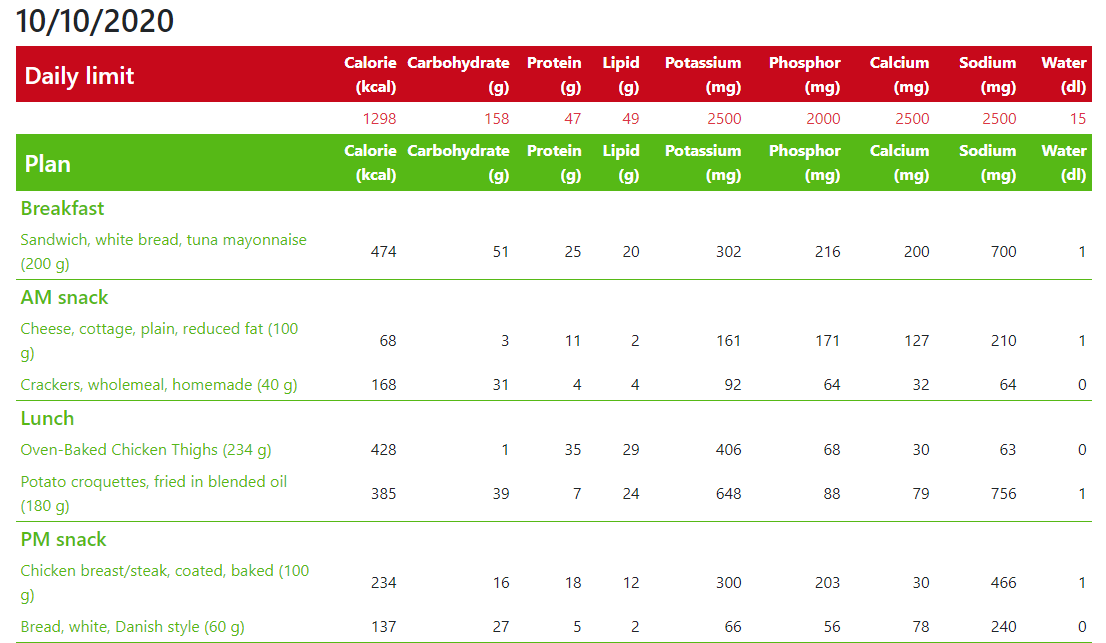
The patient needs to give consent to the dietitian to view patient data. If the patient gives that consent, then the dietitian can directly set dietary goals for the user – no personal meeting is required to assess dietary needs. Personal patient data, of course, cannot be modified by the dietitian (except for some very special piece of information) – so the dietitian does not have the same control over the patient’s profile than the original profile owner.
